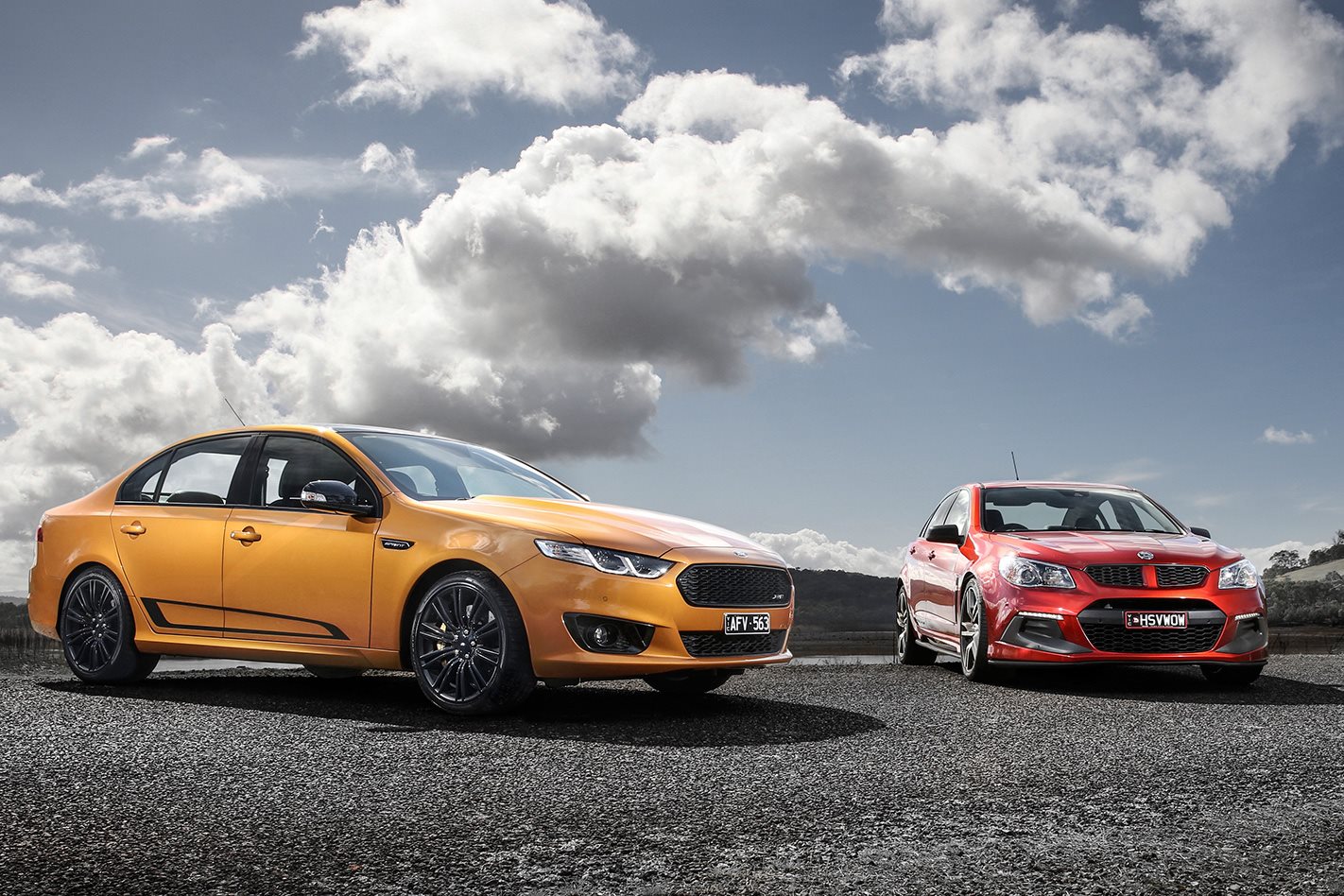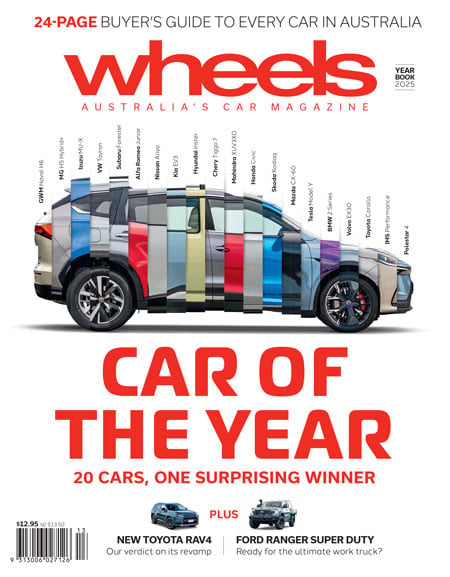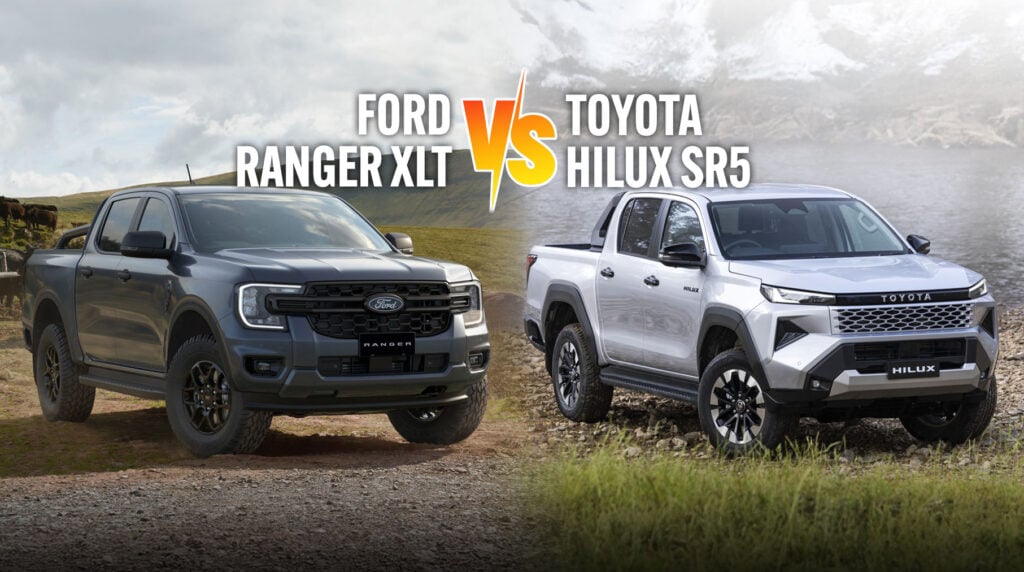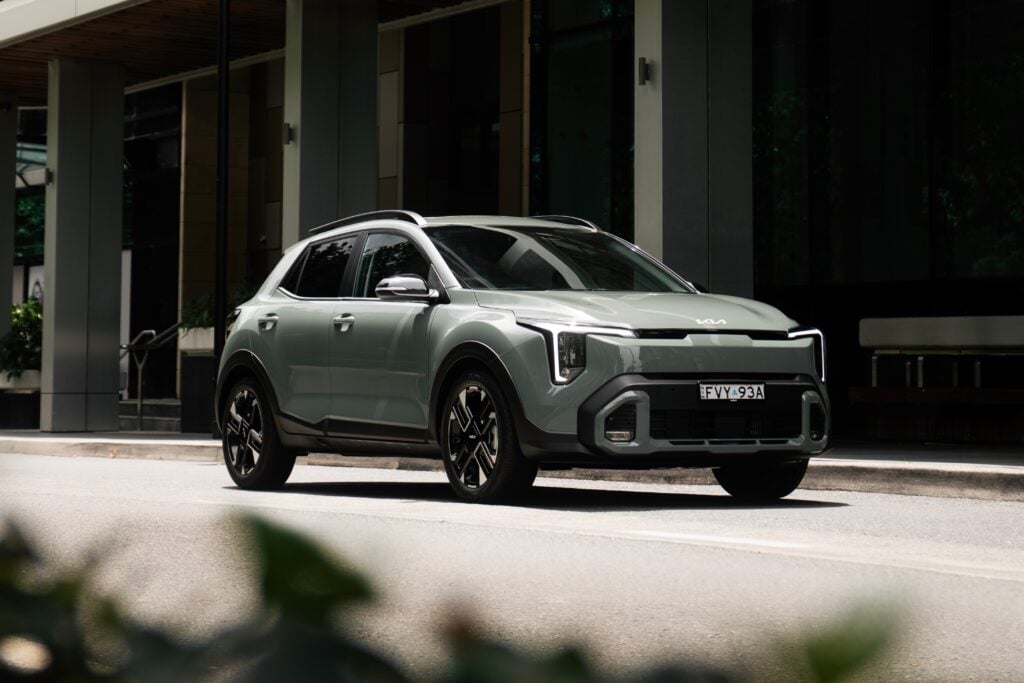Welcome to the main event, the fight for the super(charged) heavyweight belt.
Our two contenders have a long history of antagonism, but this will be one of the final battles between these two bitter rivals. In the red corner is the HSV Gen-F2 Clubsport R8 LSA, a veteran of this game but fitter than ever and in the prime – albeit the latter stages – of its career.
Facing it in the blue corner is the Ford FG X Falcon XR8 Sprint, a challenger with retirement on the near horizon, however one that has undergone an extensive training regime to make one last charge for the title. Over the next six rounds these two will be put to the test but only one can be crowned champion.

On paper this doesn’t look like a very fair fight.The Clubsport packs 400kW/671Nm from its 6.2-litre supercharged LSA V8 and asks $83,490 for the pleasure in six-speed automatic guise (manual: $80,990). Similarly specced, the $62,190 XR8 Sprint holds a substantial price advantage but also looks decisively outgunned, its 5.0-litre supercharged V8 producing ‘just’ 345kW/575Nm.
Of course, that doesn’t take into account the Ford’s well-documented ‘transient overboost’ function, which evens the ledger by boosting outputs to a lineball 400kW/650Nm. At 1872kg it’s no lightweight, but it holds a 35kg advantage over the HSV so theoretically there should be nothing in it from a performance perspective, in a straight line at least.
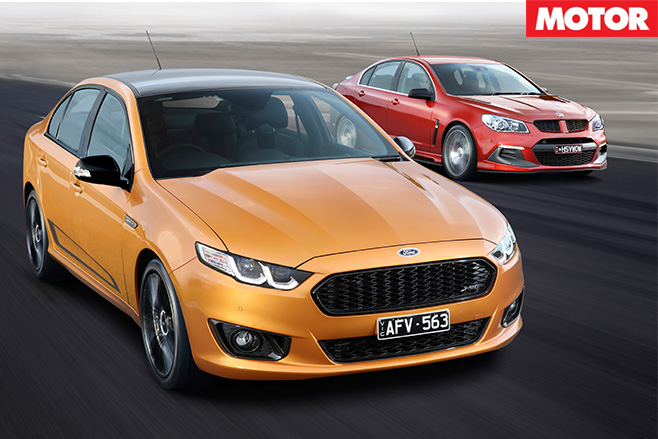
In near-perfect testing conditions – cool, sunny and dry – the Clubsport nails its best ever times, smashing 0-100km/h in just 4.48sec and crossing the quarter mile in 12.55sec at 184.84km/h. It’s a relatively easy exercise, despite the HSV lacking any form of launch control.
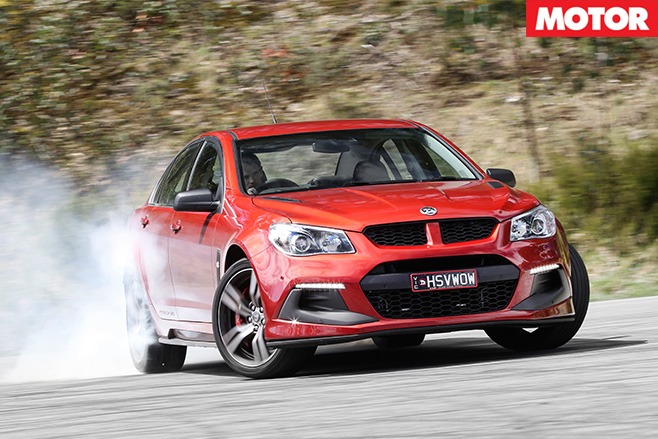
With a 182.35km/h trap speed, it’s clear the XR8 Sprint easily has the grunt to match the Clubsport, however getting it off the line cleanly proves nigh-on impossible. Whispering behind hands, Ford insiders admit the Sprint is capable of 4.6sec to 100km/h and a 12.6sec quarter mile, but the best it manages is 5.07sec to 100km/h and 13.14sec over 400 metres.
Insufficient traction is the easily identifiable culprit; feeding the power in gently results in clean runs but slow times and any attempt to use more throttle just burns the 265/35 rear Pirellis into oblivion.
A 30-minute conversation with the Sprint engineers fails to produce any progress, however later investigations reveal the potential cause of the Sprint’s troubles (see breakout on next spread). The other issue is there is a relatively small window in which to extract the best numbers as heat soak from back-to-back acceleration runs slowly but surely dulls the Miami’s edge; only slightly, but enough to rob it of 2-3km/h at the top end.
Taking the launch problems out of the equation reveals the Sprint’s true potency. From 80-120km/h it matches the Clubsport at 2.5sec and on the Ford’s first acceleration run – which results in the highest trap speed but not the best numbers – it charges from 80-190km/h in 9.98sec, whereas the HSV takes…9.98sec. Like we said, these cars are more or less as fast as one another, but it’s the Clubsport that delivers the numbers and so it takes an early lead. Clubsport: 1 Falcon: 0
Round 2: Under the Bonnet Everyone loves a set of fast numbers, but it’s the engines’ ability and character on the road that are of far greater importance and despite their similar configurations, the two have remarkably different personalities.
The Falcon feels more explosive on initial throttle application; make no mistake, the HSV is no slouch, but the Ford’s throttle mapping feels more aggressive, which means it really slams you back in your seat. It feels outrageously strong at low rpm – maximum torque is available from just 2220rpm – but with the crank-driven supercharger boost continues to build all the way to the 6200rpm cutout.
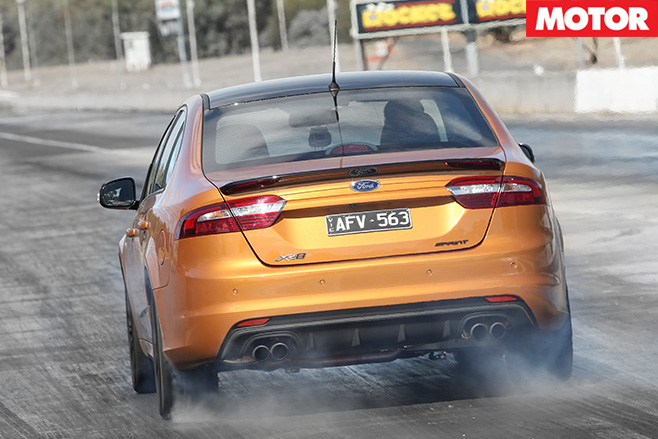
The six-speed ZF auto has incredibly long gearing, running to 122km/h in second and 188km/h in third, but with so much power available there’s a certain thrill in experiencing the seemingly endless acceleration. It also limits the need to use the gearbox, for though it’s commendably smooth during urban duties, in a performance application it feels slow and dim-witted, with the inability to rev-match on downshifts a real Achilles’ heel.
The Clubsport’s six-speed auto will blip the throttle going down the ’box, but still feels a long way from state of the art. Its shorter gearing – second stretches to 109km/h, third 168km/h – feels more appropriate for a performance car, but it refuses seemingly reasonable downshift requests frustratingly often.
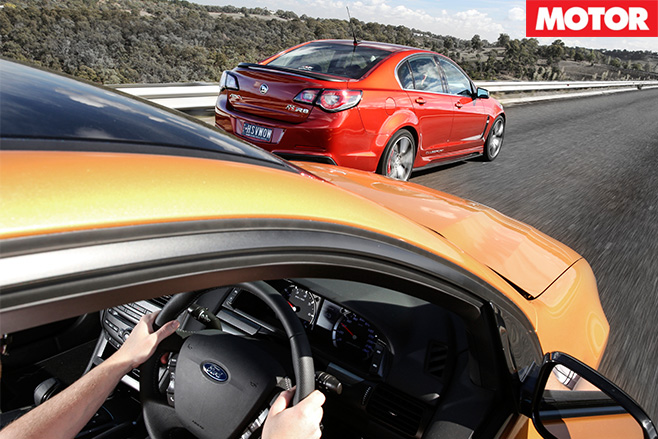
The Clubsport LSA has the benefit of shift paddles behind the steering wheel, but using the sequential lever feels far more appropriate – perhaps it’s the V8 Supercars connection.
So linear is the 6.2-litre LSA V8’s power curve that it doesn’t initially feel that fast. As with the XR8, however, power builds as revs rise and by the time the tacho needle hits its upper reaches you really need to focus on where you’re going as you’re getting there very quickly.
The noise is deeper and dirtier than the Falcon’s and while it’ll be personal preference as to which one’s better, from the inside there is more exhaust note and less blower whine, though the choof as the bi-modal exhaust opens its valves isn’t popular in the MOTOR office.
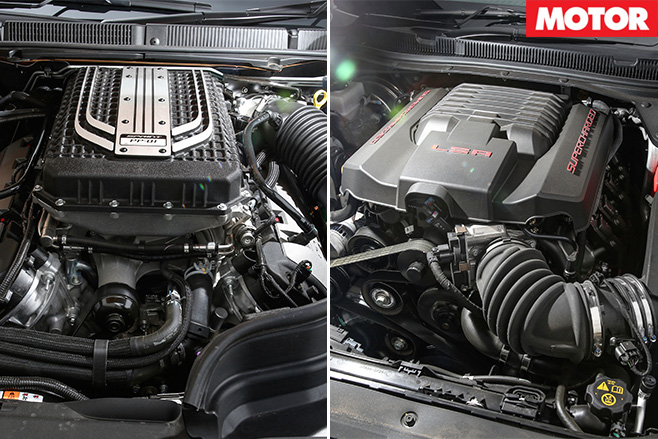
Round 3: On the Road Traditionally, one of the biggest strengths of the Aussie performance sedan has been its touring ability. From Ford XR Falcon GT to HSV W427 and almost everything in between, few cars at any price point have been able to haul passengers and luggage in relative comfort at high speed over long distances.
One of the most disappointing aspects of the FG X XR8 is its fidgety, unsettled ride, which doesn’t take long to become a major irritation on a long drive. Thankfully, the Sprint is a marked improvement. A complete suspension rethink, necessary due to the switch to Pirelli P Zero tyres, led to softer spring rates but much firmer rebound damping and the result is a ride that is firm but with enough compliance not to become wearing.
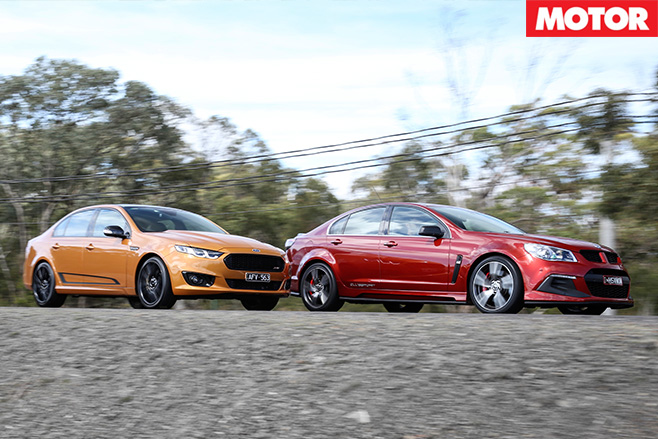
The Clubsport is also firm, with a focus on body control over ride comfort, which works well at higher speeds but can be a little abrupt over sharp bumps at low speed. Like the Falcon, it’s a reasonable compromise but HSV’s Magnetic Ride Control would be a welcome addition for the ability to soften the dampers on a bumpy road. For now, the trick suspension remains the preserve of the Senator and GTS.
One area the Clubsport does display an advantage is its refinement. Wind and road noise is well managed in both cars, but the chink in the Falcon’s armour is what appears to be insufficient underbody sound deadening. Any loose surface encounter, for instance roadworks or pulling onto the side of the road, sprays gravel into the arches with a racket that sounds like a hailstorm on a tin roof.
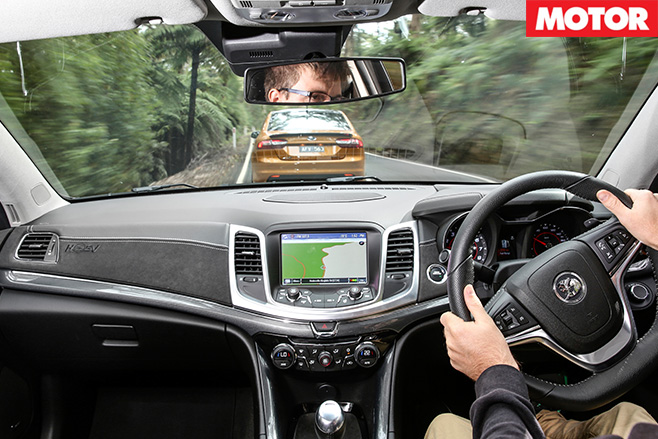
It’s another split decision, and at the halfway point the Ford is hanging on to the HSV. Clubsport: 2 Falcon: 1
Round 4: In the Bends This is where the roads, and this comparison, get interesting. For Gen-F2, HSV focused on stuffing a stable-full of horsepower under the Clubsport’s bonnet, while Ford took the opposite approach with the Sprint by upgrading the chassis in an attempt to harness the grunt it already had.
Our test route is a six-kilometre section of the Euroa-Mansfield which fortuitously contains almost every conceivable type of corner, from tight second-gear hairpins to flowing sweepers interspersed with various bumps, crests and tricky braking zones.
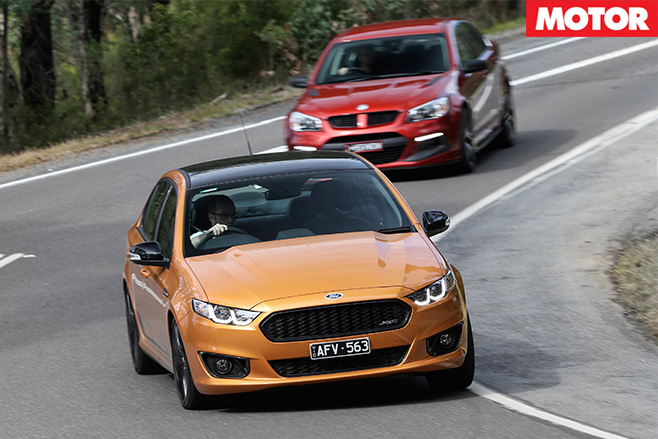
The mass does take its toll on the rubber, though, the Continental ContiSportContact 5Ps providing excellent grip but disappearing at a fearsome rate under continued punishment. Front end grip is the fuse in the handling circuit, with gentle understeer the prevailing characteristic at the limit, so it’s important to shed enough speed before turn in, a process made easier by hugely powerful brakes.
HSV stoppers are among the world’s best and the combination of large ventilated discs and four-piston calipers at both ends hauls this huge car up from 100km/h in just 33.9m while displaying an impressive resistance to fade.
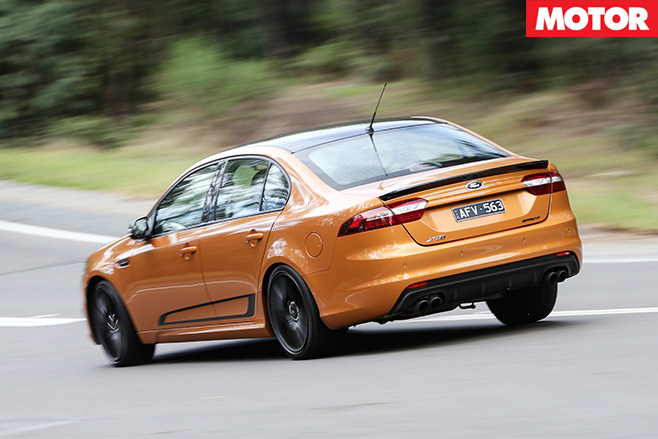
It’s arguably the Clubsport’s biggest advantage over the Sprint, as it allows it to be driven hard with a safety net in place, even in tricky conditions. Despite using the latest Bosch 9.0 ESP system, the Falcon’s electronics are way too conservative for performance driving.
It’s quite subtle in its interventions and allows relatively high cornering speeds, but as soon as you go anywhere near the throttle it strangles the car. It’s the automotive equivalent of trying to run with your shoelaces tied together and freeing the Falcon from its electronic shackles illustrates how much it’s being held back.
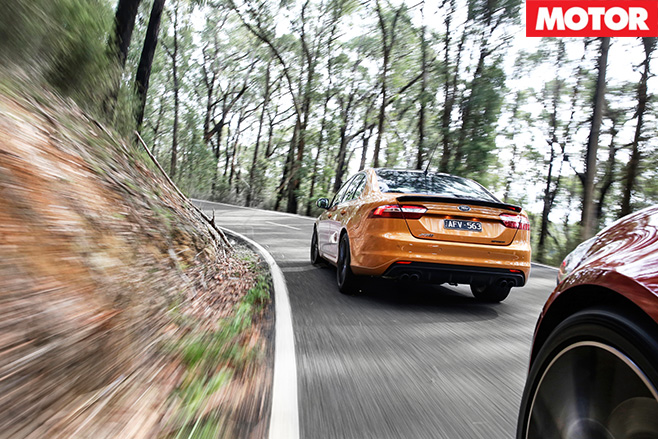
Crucially, though, there’s now enough grip and composure that you can commit to corners and know the car will stick. Front end grip has improved markedly and feels to allow more mid-corner speed than the HSV, though whether that’s actually the case will remain unclear until we get them both on a track and analyse the data. Regardless, it’s a confidence-inspiring setup and the Sprint can be driven harder and faster than any Falcon in recent memory and is more enjoyable to boot.

However, while the Ford runs it close, the HSV is still marginally the more polished package. It could do with a bit more front-end bite, but its greater communication, particularly through the steering, makes it easier to approach its limits with confidence. Clubsport: 3 Falcon: 1
Round 5: Inside and out Styling is so subjective that no points will be awarded here. For instance, some commentators have described the FG X look as like something that’s emerged from the ocean depths, however personally I think Ford’s designers have done a solid job of incorporating the corporate nose and freshening a shape that dates back to 2008.
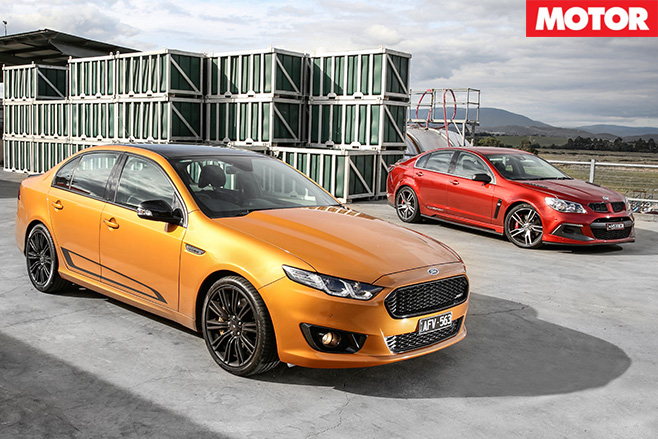
With its bonnet vents and bodykit, the Clubsport has a more aggressive exterior package and again, some will love it and others will hate it. For mine the new bodykit, especially the side skirts, and the subtle rear spoiler strike a good balance between differentiating it from the basic Commodore shape without dissolving into caricature.
Points can be awarded, however, for the interiors. The inside of the Clubsport is overwhelmingly grey and the seats lack lateral support in hard cornering, though the driving position is spot-on. The reverse is true of the Falcon, its seats more supportive but mounted far too high, the driver perched like a child in a high chair. Yes, we’ve said it many times before, but that doesn’t make it any less true.
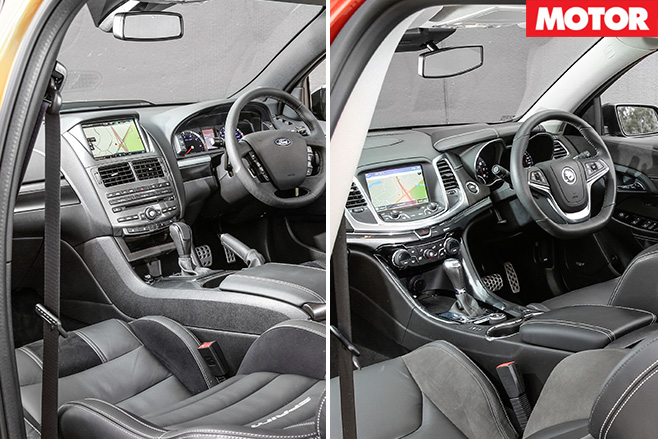
Round 6: Dollars & Sense Value is the Falcon’s trump card. Yes, it struggled on the strip but from an experiential standpoint, it offers a package every bit as potent as the Clubsport for $20,000 less. With equal drivers on a twisty road or racetrack, there’s unlikely to be much more than a handful of metres between them, which means the Sprint offers enormous bang for your buck.
It lacks the 21st century toys of the HSV, notably active safety equipment like blind-spot monitoring, lane-assist and emergency braking, but traditional muscle car buyers aren’t likely to notice their absence and everything they will use, stuff like sat-nav, Bluetooth audio and smartphone app support, is present and correct.
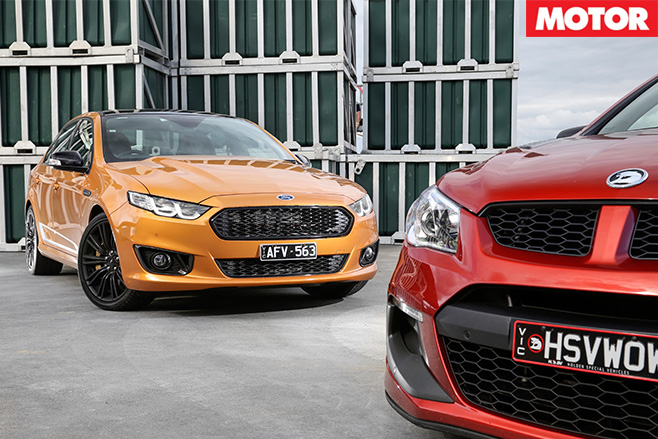
The verdict The scores tell the story: the HSV wins, if only by the slimmest of margins. A half-point swing in any of the six rounds would’ve led to a tie. The Clubsport LSA wins because it is the better car; it puts its power down more effectively, inspires more confidence in the driver and is the more competitive contemporary package. It’s an excellent example of the modern-day muscle car, but its price tag reflects this.
Ford has done a great job in making the Sprint a fitting farewell to the Falcon. It certainly doesn’t leave the Clubsport bruised or bloodied in any area, but that it’s now close enough to compete is a big achievement. A regular XR8 would be mauled by the HSV. Sprint owners have bought something much more than a badge exercise; let’s just hope they don’t tuck them away in sheds, as none of the improvements will be noticeable in there.
There’s no fairytale win for the XR8 in its final bout, but neither is it a knockout, and while the HSV wins, both contenders deserve to leave the arena carried on the shoulders of others.
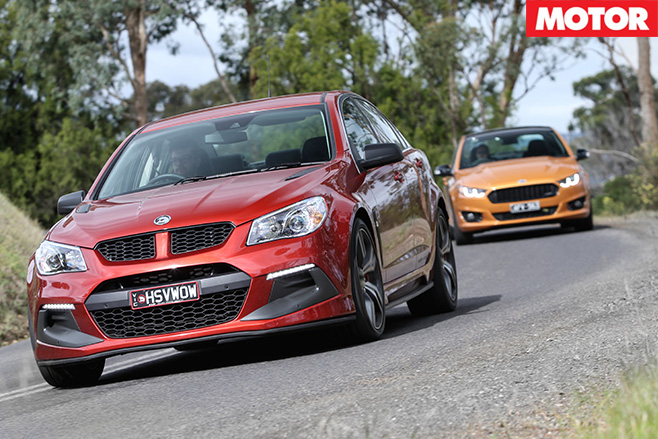
Clubbie comes up trumps
| u00a0 | Ford XR8 Sprint | HSV Clubsport LSA |
| 0-10km/h | 0.40 | 0.32 |
| 0-20km/h | 0.84 | 0.71 |
| 0-30km/h | 1.28 | 1.10 |
| 0-40km/h | 1.68 | 1.47 |
| 0-50km/h | 2.13 | 1.84 |
| 0-60km/h | 2.61 | 2.28 |
| 0-70km/h | 3.18 | 2.76 |
| 0-80km/h | 3.82 | 3.29 |
| 0-90km/h | 4.44 | 3.86 |
| 0-100km/h | 5.07 | 4.48 |
| 0-110km/h | 5.69 | 5.20 |
| 0-120km/h | 6.66 | 5.97 |
| 0-130km/h | 7.65 | 6.76 |
| 0-140km/h | 8.70 | 7.57 |
| 0-150km/h | 9.68 | 8.47 |
| 0-160km/h | 10.69 | 9.45 |
| 0-170km/h | 11.73 | 10.65 |
| 0-180km/h | 12.86 | 11.91 |
| 0-190km/h | N/A | 13.27 |
0-400m | 13.14sec @ 182.35km/h | 12.55sec @ 184.84km/h |
SPEED IN GEARS | 69km/h @ 6200rpm | 64km/h @ 6300rpm |
2nd | 122km/h @ 6200rpm | 109km/h @ 6300rpm |
3rd | 188km/h @ 6200rpm | 168km/h @ 6300rpm |
4th | 230km/h @ 5680rpm* | 224km/h @ 6300rpm |
5th | 230km/h @ 4330rpm* | 250km/h @ 5200rpm* |
6th | 230km/h @ 3440rpm* | 250km/h @ 4100rpm* |
As tested by MOTOR: Heathcote Dragway, 10:30am, 17 degrees, dry. Driver: Scott Newman. *Manufacturer’s claim
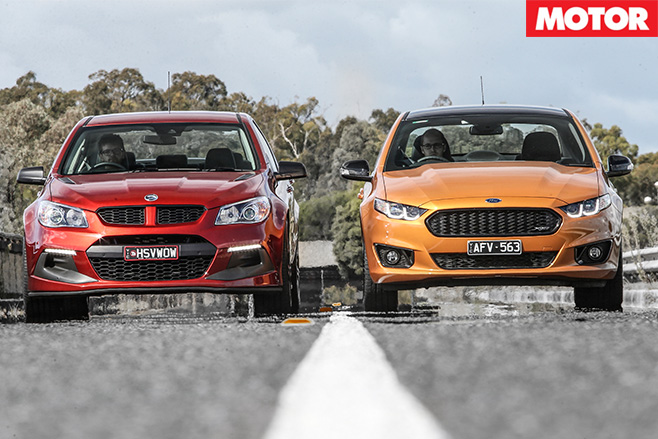
| u00a0 | Ford Falcon XR8 Sprint | HSV Clubsport R8 LSA |
| Body | 5-door, 5-seat sedan | 5-door, 5-seat sedan |
| Drive | rear-wheel | rear-wheel |
| Engine | 4951cc V8, DOHC, 32v, supercharger | 6162cc V8, OHV, 16v, supercharger |
| Bore/Stroke | 92.2 x 92.7mm | 103.25 x 92.0mm |
| Compression | 9.3:1 | 9.1:1 |
| Power | 345kW @ 5750rpm (400kW on overboost) | 400kW @ 6150rpm |
| Torque | 575Nm @ 2220-6250rpm (650Nm on overboost) | 671Nm @ 4200rpm |
| Power/Weight | 184kW/tonne | 210kW/tonne |
| Transmission | 6-speed automatic | 6-speed automatic |
| Weight | 1872kg | 1907kg |
| Suspension(F) | A-arms, coil springs, anti-roll bar | struts, coil springs, anti-roll bar |
| Suspension(R) | multi-links, coil springs, anti-roll bar | multi-links, coil springs, anti-roll bar |
| L/W/H | 4950/1868/1493mm | 4991/1899/1453mm |
| Wheelbase | 2838mm | 2915mmu00a0 |
| Tracks | 1583/1598mm (f/r) | 1616/1590mm (f/r) |
| Steering | hydraulically-assisted rack-and-pinion | electrically-assisted rack-and-pinion |
| Brakes(F) | 355mm ventilated/drilled discs, 6-piston calipers | 367mm ventilated discs, 4-piston calipers |
| Brakes(R) | 330mm ventilated/drilled discs, 4-piston calipers | 372mm ventilated discs, 4-piston calipers |
| Wheels | 19.0 x 8.0-inch (f); 19.0 x 9.0-inch (r) | 20.0 x 8.5-inch (f); 20.0 x 9.5-inch (r) |
| Tyre sizes | 245/35 ZR19 (f); 265/35 ZR19 (r) | 255/35 ZR20 (f); 275/35 ZR20 (r)u00a0 |
| Tyre | Pirelli P Zero | Continental ContiSportContact 5P |
| Price as tested | $62,190 | $83,490u00a0 |
| Pros | Massive speed; much improved handling; value | Archetypal Aussie muscle car; fast, furious and fun |
| Cons | Vague steering; out-dated gearbox | Firm ride; very heavy; lotsa money |
| Star Rating | 4/5 | 4/5 |


